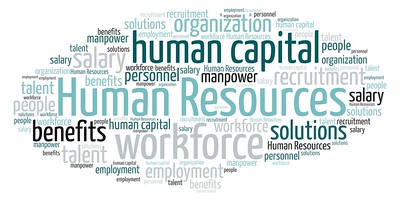Module 8: Managing Human Resources and Labor Relations
Section outline
-

This chapter looks at the role of human resources within an organization, from the general processes of developing and planning to the more specific tasks of employee evaluation and compensation.
Human resource management and labor relations involve acquisition, development, use, and maintenance of a human resource mix (people and positions) to achieve strategic organizational goals and objectives. Successful human resource management is based on a company’s ability to attract and hire the best employees, equip them with the knowledge and skills they need to excel, compensate them fairly, and motivate them to reach their full potential and perform at high levels. Today’s business environment presents numerous challenges to effectively managing employees.
Each day, human resource experts and front-line supervisors deal with these challenges while sharing responsibility for attracting and retaining skilled, motivated employees. Whether faced with a large or small human resources problem, supervisors need some understanding of difficult employee-relations issues, especially if there are legal implications.
In this chapter, you will learn about the elements of the human resource management process, including human resource planning and job analysis and design, employee recruitment and selection, training and development of employees, performance planning and evaluation, and compensation of the workforce. The chapter also describes labor unions and their representation of millions of American workers in construction, manufacturing, transportation, and service-based industries.
Upon completion of this module, you will be able to:1. Explain the human resource management process and how are human resource needs determined.
2. Illustrate how firms recruit applicants.
3. Demonstrate how firms select qualified applicants?
4. Identify the types of training and development organizations offer their employees.
5. Discuss how performance appraisals are used to evaluate employee performance.
6. Compare the types of compensation and methods for paying workers.
7. Discuss what is a labor union and how is it organized, what is collective bargaining, and what are some of the key negotiation issues.
8. Explain how grievances between management and labor are resolved, and what tactics are used to force a contract settlement.
9. List key laws and federal agencies affecting human resource management and labor relations.
10. Recognize trends and issues affecting human resource management and labor relations.The objectives of this module correspond with the following course outcome(s):- Describe the ethical, regulatory, and social environments of business.
- Explain accounting and financial management including planning, budgeting, resource allocation, and sources of funding.
- Describe the functions of the business manager: planning, organizing, leading, and controlling.
To achieve these objectives:
- Read the Module 8 Introduction.
- Read and view the materials in the Chapter 8 Pressbooks book.
- Complete the Module 8 quiz.
- Complete the Module 8 Ethics Activity.
- Compete the Module 8 Critical Thinking Case Group Assignment.
Module Pressbooks Resources and Activities
You will find the following resources and activities in this module at the Pressbooks website. Click on the links below to access or complete each item.
-
This is a 25 question multiple choice and true / false test. It is worth 25 point and is based on your reading of the textbook. While you may return to previous questions before submitting your completed quiz, you will only be allowed to take and submit the exam once. Once you complete all 25 question, you will submit the quiz.
Background Colour
Font Face
Font Kerning
Font Size
Image Visibility
Letter Spacing
Line Height
Link Highlight
Text Colour
